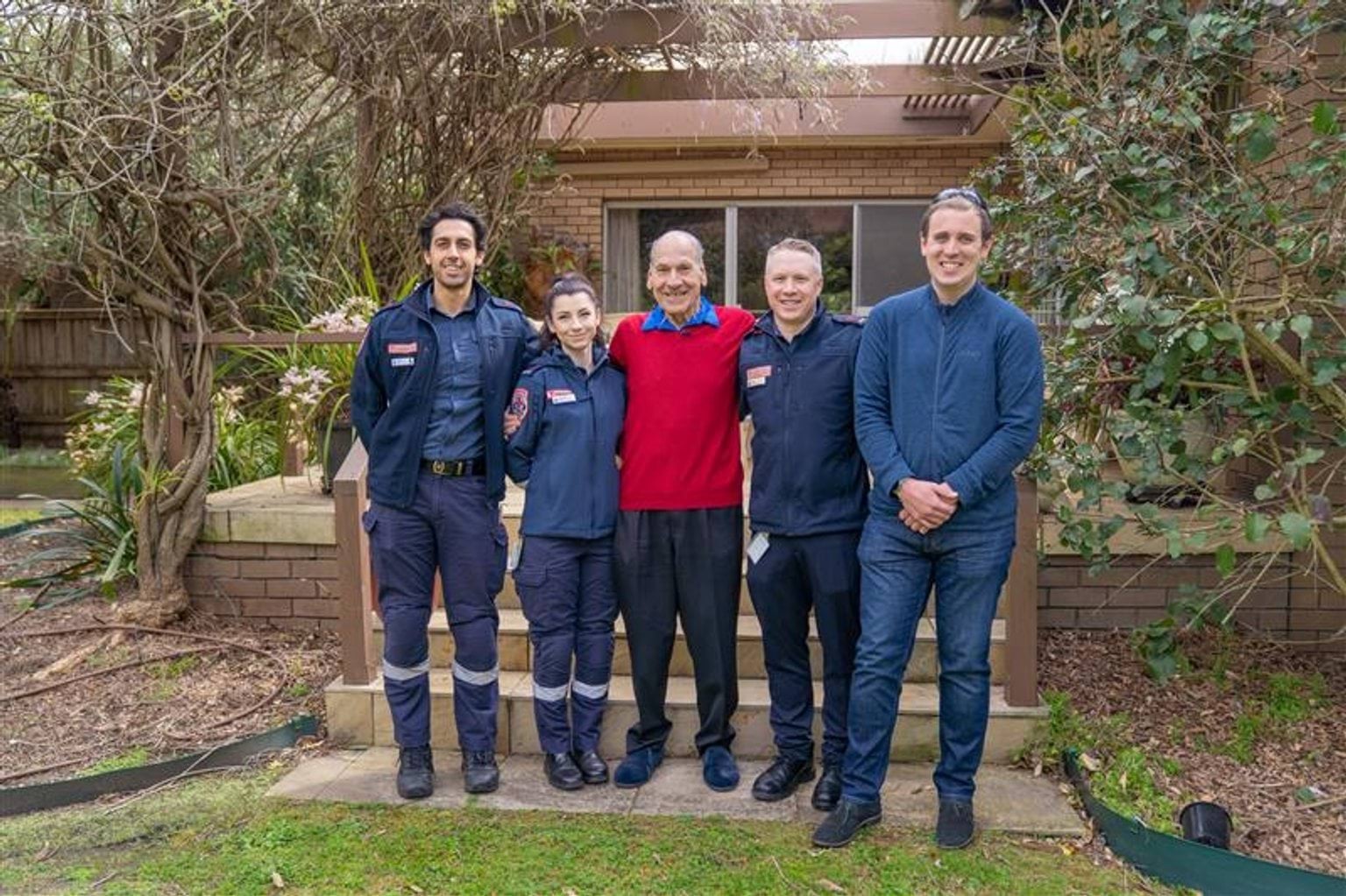- Published:
- Tuesday 7 October 2025 at 11:28 am

Ray Riehm, 83, is a familiar face at his local swimming pool, where he regularly swims laps to stay active. But in early February, his routine took a dramatic turn when he suffered a sudden cardiac arrest mid-swim.
Fortunately, help was close at hand.
Alex, a GoodSAM responder and pool service technician, was working onsite at the pool when he received an urgent GoodSAM alert on his phone. He had just stepped away for a drink of water when the notification came through, and he immediately rushed to the pool.
GoodSAM is a mobile app that connects patients in cardiac arrest with a nearby volunteer who is willing to start hands-only cardiopulmonary resuscitation (CPR) while paramedics are on their way.
By the time Alex arrived at the poolside, lifeguards had pulled Ray from the water and begun CPR. Alex jumped in to assist, and together they used the pool’s automated external defibrillator (AED) to deliver three life-saving shocks.
The combination of CPR and defibrillation helped Ray’s heart begin beating on its own again.
Mobile intensive care ambulance (MICA) paramedic Tim Sedgwick said that the swift actions of the lifeguards, Alex and paramedics were instrumental in achieving return of spontaneous circulation (ROSC) - which meant that Ray’s heart was beating on its own once again.
Alex, currently in his first year studying paramedicine at Victoria University, emphasised the importance of early intervention.
“It can be scary to respond to someone in cardiac arrest, but through the GoodSAM program you’re supported every step of the way and the impact you can make far outweighs any nerves,” he said.
“Everyone should download the GoodSAM app. You never know when you might be the one to give someone a second chance at life.”
Inspired by his mum, a critical care nurse, Alex has worked as a service technician for four years and is now pursuing his dream of becoming a paramedic.
As for Ray, he’s recovering well and looking forward to returning to the activities he loves - golfing, gardening and volunteering with his local Rotary club. He and his wife Nola are planning a holiday to Queensland later this year.
“It’s a miracle I’m alive,” Ray said. “I could’ve died then and the.
“The paramedics and lifeguards did a terrific job, and it feels wonderful to be able to say thank you.”
Ray credits his physical fitness for helping him survive the ordeal and hopes his story encourages others to stay active and learn CPR.
October marks the sixth year of Ambulance Victoria’s Shocktober campaign and aims to increase cardiac arrest survival rates across Victoria.
Ambulance Victoria Medical Director Associate Professor David Anderson said it is essential to know CPR, how to use an Automated External Defibrillator (AED) and where your closest defibrillator is located.
“Shocktober is about giving more Victorians who suffer a cardiac arrest a better chance of returning to their loved ones,” he said.
“We are urging the community to refresh their knowledge about CPR and how to use a defibrillator. For every minute CPR is delayed, survival decreases by 10 per cent.
“Cardiac arrest can happen to anyone, anytime, anywhere, at any age, health or fitness level, and often without symptoms.
“Our message is simple – you don’t need to be a paramedic to save a life, just remember to Call (Triple Zero 000), Push (perform CPR) and Shock (use an AED).”
This month, Victorians are also encouraged to sign up as GoodSAM responders through a free smartphone app that connects people willing to do CPR with nearby patients in cardiac arrest before paramedics arrive. More than 17,300 Victorians are already signed up, but more are needed.
Last year, AV paramedics and first responders were called to 7,545 cardiac arrest patients.
Find out more about Shocktober, the GoodSAM app and how to learn CPR and use an AED (defib)
Updated

